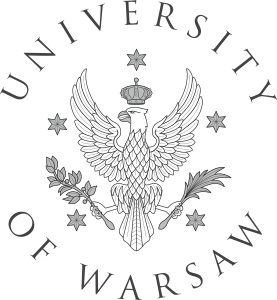The Centre of New Technologies invites to a seminar by
prof. Marek Cieplak
Head of Laboratory of Biological Physics, Institute of Physics, Polish Academy of Sciences
Title: „Interbasin traffic and emergence of knots in intrinsically disordered proteins”
Date: November 15th, 2019 at 12 p.m.
Venue: Centre of New Technologies, Banacha 2C,
Lecture Hall 0142 (Ground floor)
Host: prof. Joanna Trylska and prof. Dariusz Plewczyński
Abstract:
The equilibrium dynamics of the intrinsically disordered proteins is thought to consist of transitions between many basins in the free energy landscape whereas structured proteins stay in the vicinity of one native basin. We demonstrate this picture explicitly by studying networks defined on the discretized plane: conformational end-to-end distances vs. radii of gyration. The bin sizes are defined by time scales that span orders of magnitude. The networks, derived from all-atom and coarse-grained molecular dynamics simulations, are nearly scale invariant. The bin representation also provides insights into the folding proces of the structured proteins and identifies regions of hindrance to folding. Transient knotted structures are expected to arise during the volatile evolution of intrinsically disordered peptide chains. We show that this is indeed the case for sufficiently long polyglutamine tracts and α-synuclein. The polyglutamine tracts are fused within huntingtin protein that is associated with the Huntington neurodegenerative disease. We show that the presence of knots in the tracts hinders and sometimes even jams translocation, especially when the knots are deep. The knots in polyglutamine may form in tracts exceeding about 40 residues. This fact explains the existence of a similarly sized length treshold above which there is an experimentally observed toxicity at the monomeric level. We also discuss emergence of knots in α-synuclein. We show that these knots are either shallow or deep and last for about 3 – 5 µs, as inferred from an all-atom explicit-solvent 20 and 30 µs trajectories. We discuss conformational biasses that take place in α-synuclein and contact formation during association of two chains of this protein.
In collaboration with: M. Chwastyk, Ł. Mioduszewski, B. de Aquino, A. Gomez-Sicilia, M. Carrion-Vazquez, P. Robustelli.

